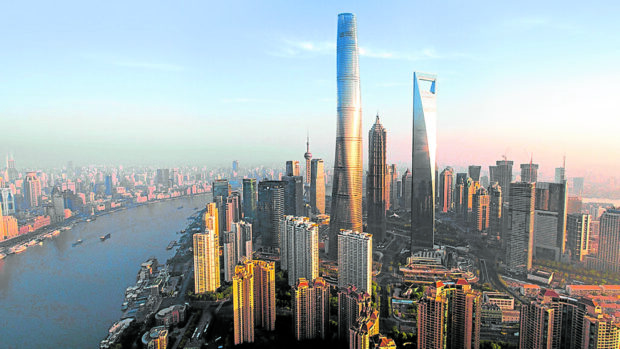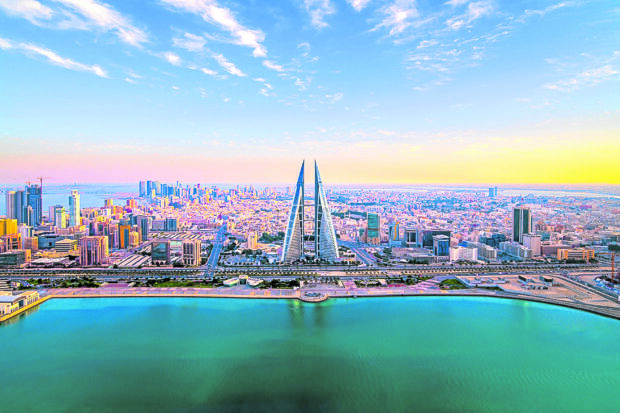Buildings that counter global warming
How’s the weather at your place today?
Unless you’re blessed with all day airconditioning at home, chances are, you’re one of many Filipinos suffering from the intense heat this summer season. While the warm weather certainly brings discomfort and even illnesses to some, it’s actually the sign of even something scarier happening across the world. You may not realize it, but it’s actually one of the more visible signs of global warming—a distressing event that can affect all humans for generations to come.
Global warming, or climate change as it’s more technically known, can bring about droughts, uncomfortably high temperatures, food shortages and other challenges. Each person contributes to this dilemma through their carbon footprints, but it’s the big consumers such as buildings that make a significant impact on Mother Nature.
Thankfully, many structures today are being designed and built to combat climate change through sustainable solutions. Here are some excellent examples of architecture that are making a positive impact on the fight against climate change.

Designed by Studio 505, the Pixel Building in Melbourne is a carbon-neutral structure that is considered one of the world’s “greenest” buildings.
The Pixel Building
Melbourne, Australia
True to its name, the Pixel Building features eye-catching, multicolor panels which clad its four-story facade. Beneath its lively exterior, however, lies one of the world’s “greenest” buildings based on the standards set by several international green councils.
Boasting of a 6-star rating from the Green Star Office Design Rating and a LEED Platinum certification, this structure is carbon-neutral. It implies that the design of the building pretty much negates the harmful effects its construction and operations may have on the environment—a particularly difficult feat to achieve with a modern building.
For one, the Pixel Building recycles water so much that it can actually be disconnected from the municipal supply and yet be able to meet its tenant’s requirements. It utilizes rainwater harvesting and natural filtration to supply water needed in its toilets and refrigeration systems.
The building’s interior temperatures are also managed, with the colorful sun-shading panels providing daylight inside the building while preventing glare and excessive heat. At night, smart windows automatically release the heat collected during the day and bring in fresh air to cool off the building.
Even the concrete used to build the structure was modified to make it more sustainable in the long run. Dubbed “Pixelcrete,” the modified concrete has approximately half the carbon footprint of regular concrete. Combined with other sustainable materials and solutions, this innovation reduces the Pixel Building’s harmful impact on earth and improves the comfort levels of the building’s users—making the project a win for all.

Designed by the American firm Gensler, the Shanghai Tower exemplifies sustainable practices applied skillfully on a skyscraper design.
The Shanghai Tower
Shanghai, China
The tallest building in China and currently the third-tallest tower in the world, the Shanghai Tower is amazing not only for its height but also for its features.
Designed by American firm Gensler, the tower has 127 levels that cater to retail, dining, hotel, event and office spaces. The structure is clad in a double skin facade, which allows it to maximize the use of natural light.
A landscaped atrium built in between the two glass skins of the tower offers natural cooling and functions as an informal gathering space for the building’s tenants. This does not only reduce the carbon footprint of the tower but also helps improve the mental health of its tenants.
Moreover, the tower uses geothermal heating and wind turbines to help control heat and generate free electricity. Water recycling systems are also set in place to irrigate the vegetation in the building and supply the tenants’ requirements.
Overall, the Shanghai Tower is a prime model for green skyscrapers. The building demonstrates that technology and nature can work hand-in-hand to bring about resilient, sustainable communities for the future.

A brainchild of the Atkins Group and Architect Shain Killa, the Bahrain World Trade Center features giant wind turbines that account for 15 percent of the building’s power requirements.
The Bahrain World Trade Center
Manama, Bahrain
The brainchild of Architect Shaun Killa of Atkins, the Bahrain World Trade Center (BWTC) is the first modern building to feature large-scale wind turbines in its design.
Finding inspiration in the traditional wind towers of Saudi Arabia, the building transforms the traditional icons into exceptional innovations. Wind turbines grace the building’s center, making the most of the sea breeze that surrounds the project. The wind turbines are connected to the building’s electrical grids. They can generate as much electricity as that needed by 250 homes for a year. The wind turbines reduce the building’s electrical consumption by up to 15 percent as a whole.
Besides its iconic wind turbines, BWTC also finds pride in its intelligent systems. The building features high-speed panoramic elevators, premium security, and exceptional views. Combining both sustainability and technology, the BWTC has been recognized by multiple award-giving bodies and green councils for its iconic and innovative design.

Going beyond aesthetics, sustainable modern buildings feature good practices which reduce their carbon footprints and help reduce global warming.
The takeaway
Climate change is already present in our midst, with a clear rise in global temperatures and occurrence of catastrophes in recent times. Despite this dilemma, it’s still not too late for us to try to combat global warming by reducing our carbon footprint.
Modern architecture that features sustainable practices sets the standard for better living for all of us. While these buildings certainly make an impact on improving the conditions in our world today, let us not forget to do our own part in the fight against climate change. By becoming more mindful of our surroundings, we may be able to help Mother Nature gradually heal for the benefit of future generations.
Sources: https://www.greenbiz.com; https://www.studio505.com.au; https://journeys.dartmouth.edu; https://www.gensler.com; https://modabahrain.com; Philipp Deus via Pexels.com
